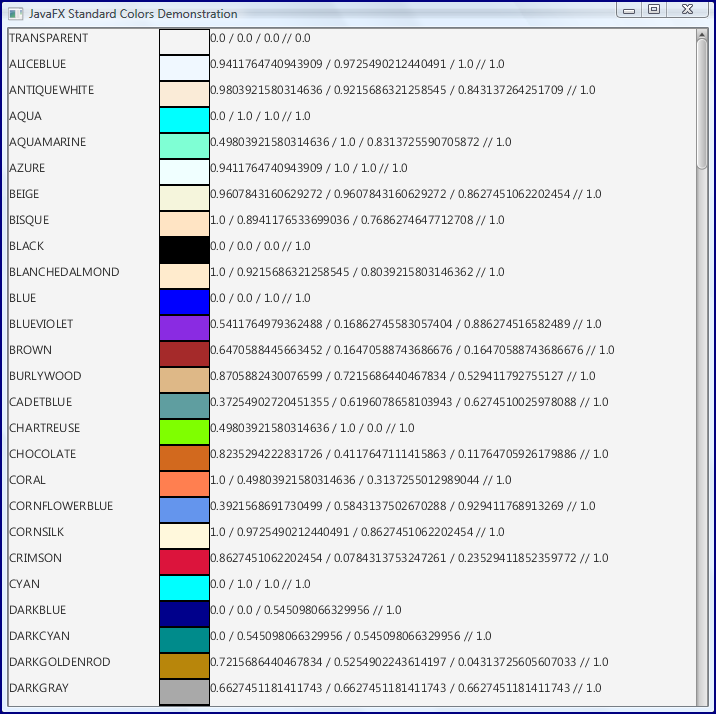

Of the Java Tutorials warns of "performance overhead" in its list of Patterns applied to new classes that are implemented via transformationįrom existing source via reflective capabilities. To transform source classes into target classes. Specifically these chapters focus on using reflective capabilities ("Design patterns") discuss using reflection capabilities to generateĬode.
#JAVA REFLECTION CONSTRUCTOR WITH ARGUMENTS CODE#
Object in the virtual machine is actually identified by both its fully qualified name and defining loader" (I added the emphasis).Ĭhapter Seven ("Reflective code generation") and Chapter Eight Subject that Java developers definitely need to be aware of even when Section 6.3 ("Multiple namespaces") provides information on a This is another subject that Java developers frequently Although this is still the approach for acquiring a stack's elements recommended in the Javadoc documentation for StackTraceElement, I prefer using Thread.getStackTrace() approach (see my blog post The Surprisingly Simple StackTraceElement), which was not made available until J2SE 5.Ĭhapter Six ("Using the class loader") provides nice coverage of JavaĬlass loaders.

The authors demonstrateĪccessing these stack trace elements via the Throwable.getStackTrace() call. The authors point out that this is an approachįor performing introspection on "execution state of the runningĪpplication" (versus much of the commonly considered reflection thatįocuses on introspection of structure). To provide introspection capabilities against the call stack (featureĪvailable since JDK 1.4). Modifies the behavior of the program by directly taking control of thatīehavior." This is one of the best treatments of dynamic proxies thatĬhapter Five ("Call stack introspection") covers use of StackTraceElement The chapter defines intercession as "any reflective ability that Is "Java's only way of approximating method invocation intercession." 9).Ĭhapter Four ("Using Java's dynamic proxy") is devoted to coverage of Java's dynamic proxies. "objects that are part of a program's self-representation" (p. Introspection is defined as "reflective features that allow a "the ability of a running program to examine itself and its softwareĮnvironment, and to change what it does depending on what it finds" (p.ģ). Instances of Java classes and introspecting method and fieldĮarly pages of Java Reflection in Action provide nice These chapters provide detailedĬoverage of the most important reflection APIs and focus on constructing Reading these three chapters alone provides the Javaĭeveloper with the basics of Java reflection, including the advantagesĪnd some pitfalls of using reflection. These three chapters are what most people probably expect in a book on Reflectively"), and Chapter Three ("Dynamic loading and reflectiveĬonstruction") cover the basics of Java reflection. The basics of Java reflection after reading only the first threeĬhapter One ("A few basics"), Chapter Two ("Accessing fields It consists of ten chaptersĪnd is under 300 pages long. Java Reflection in Action is written by the father/son team of Ira R. For example, I haveįound reflection to be useful in writing Groovy scripts to manage Java Use reflection to good effect in even more ways. However, it is probably true that many of us could Is a topic that most Java developers use on a daily basis, eitherĭirectly or indirectly via popular frameworks and libraries that make Made available after the release of JDK 1.4. Where this book suffers is in coverage of reflection-related features Given this relative timing, it's obvious that The book was written when JDK 1.4 was the commonly used release of Java and J2SE 5 was well on its way ( released Weaknesses, but I was surprised at how relevant its information still In general, age is the common theme of most of its In this post, I review this book and cover its strengths and its Was published in 2004, but remains largely applicable eight years


 0 kommentar(er)
0 kommentar(er)
